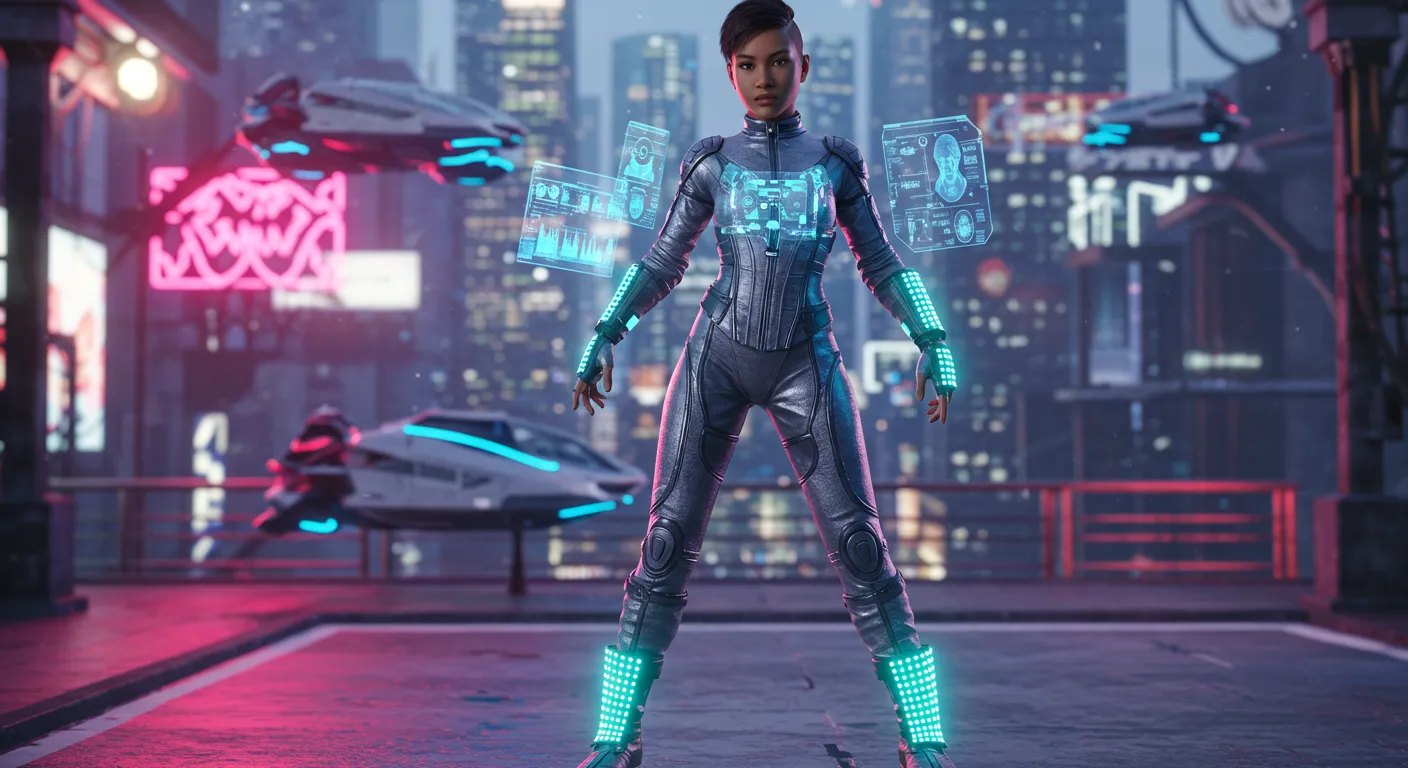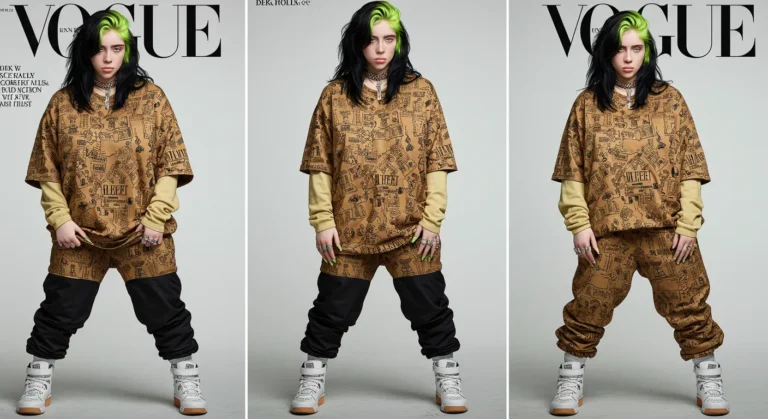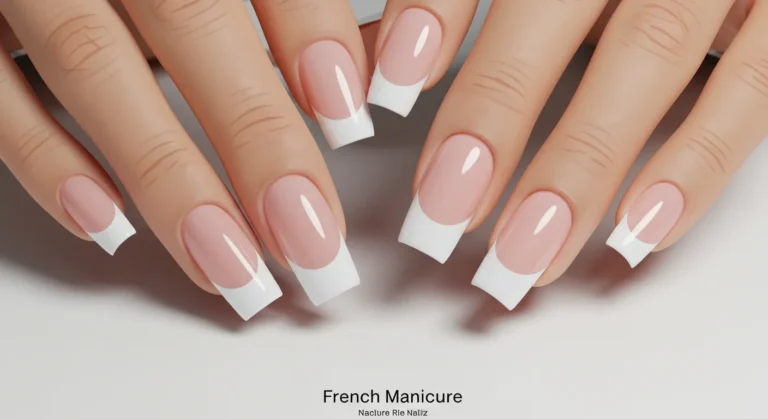Futuristic Fashion best Where Tech Meets Style in 2025
Introduction
Futuristic fashion isn’t just a style it’s a movement. It redefines how we perceive clothing, functionality, and the boundaries of personal expression. Rooted in creativity, innovation, and technology, futuristic fashion explores the “what could be” of style. It’s where fashion meets artificial intelligence, space-age aesthetics, and ethical consciousness.
Originating in conceptual runways and science fiction media, this genre of fashion has evolved into something tangible, wearable, and surprisingly influential. It’s no longer just about silver suits and LED dresses; futuristic fashion is about merging advanced materials, intelligent design, and sleek silhouettes to create something new. As our society advances technologically, fashion follows—often acting as a visual prediction of where we’re headed.
The rise of this trend is also a cultural response to rapid global changes—climate change, AI, space exploration, and virtual reality. Designers, artists, and even consumers are leaning into innovation, not only for the sake of aesthetics but also to solve practical problems. Clothing is being designed to regulate temperature, change color, or even clean itself. In a world defined by fast-paced evolution, futuristic fashion is what anchors our identity in forward-thinking ideals.
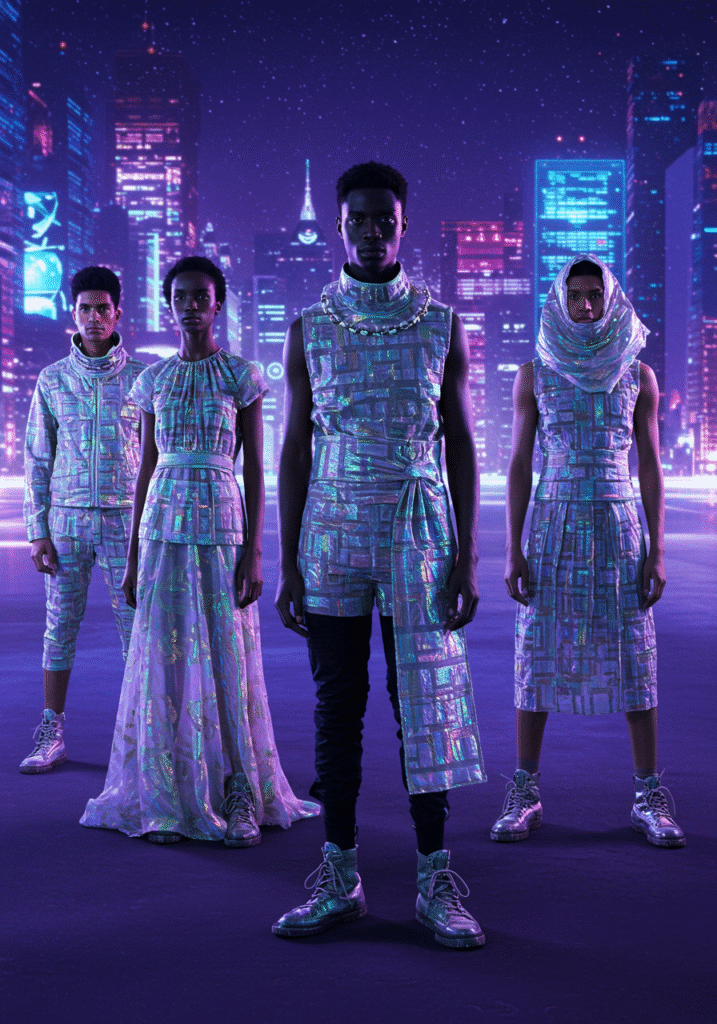
Key Elements and Materials
What exactly makes a garment “futuristic”? The answer lies in its materials, silhouettes, and innovation. Futuristic fashion is characterized by clean lines, asymmetrical cuts, tech-infused fabrics, and minimalist, often monochromatic color palettes with bursts of neon or metallics. It’s not about loud branding—it’s about function and form.
Materials like neoprene, graphene, smart textiles, reflective vinyl, PVC, and recycled plastics dominate futuristic wardrobes. These fabrics do more than look futuristic—they perform. They might be heat-sensitive, waterproof, or even biodegradable. Many garments are embedded with sensors that track biometric data or adapt based on the environment.
Designers often draw inspiration from sci-fi films, cyberpunk culture, and space-age architecture. Think aerodynamic shapes, oversized shoulders, sleek bodysuits, and multi-functional outfits. Accessories are bold—visor-like glasses, modular shoes, and 3D-printed jewelry.
Functionality is at the core. Every seam, zipper, and fold has a purpose. Whether it’s to provide airflow, enhance movement, or house a hidden gadget, futuristic fashion marries utility with style in an unbreakable bond.
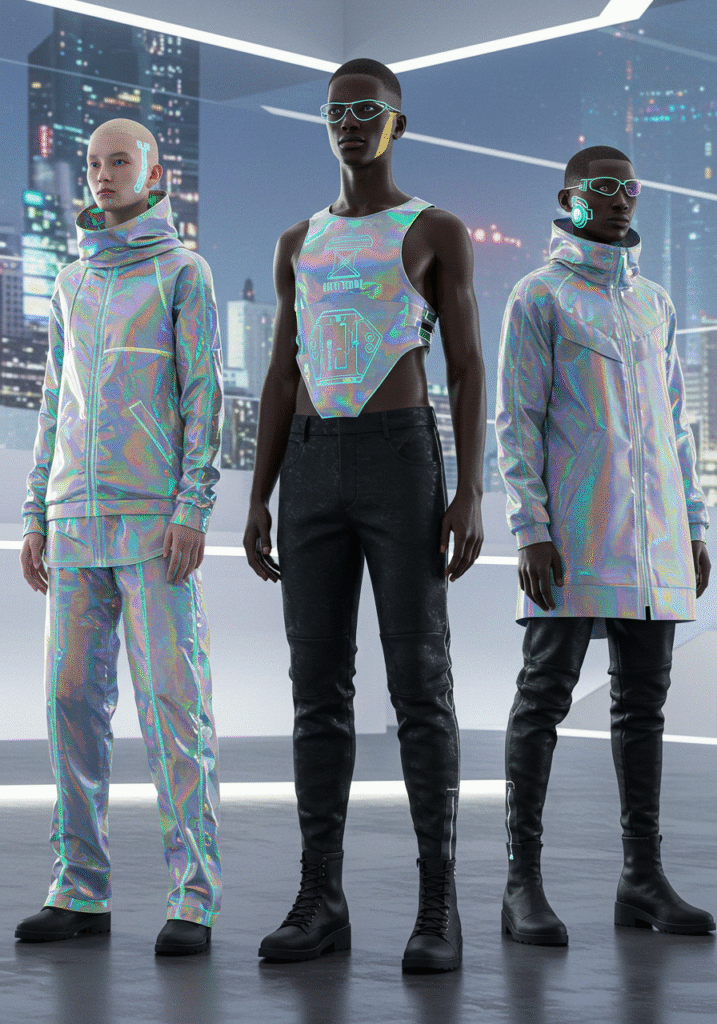
How Technology is Shaping Futuristic Fashion
Technology is no longer just a tool for production—it’s part of the garment itself. Smart clothing is arguably the backbone of futuristic fashion. Designers and tech companies are now working together to create clothing that interacts with the environment or even the wearer’s body.
Wearables have evolved far beyond fitness trackers. Clothing embedded with sensors can now monitor heart rate, posture, or hydration levels. Some can even send alerts to your phone when health markers reach abnormal levels. Brands like CuteCircuit, The Unseen, and Hexoskin are leading the charge.
3D printing has also revolutionized how we think about garment construction. With this technique, designers can create complex shapes and textures previously impossible with traditional methods. It allows for customization, less waste, and stunning designs that push boundaries.
Augmented Reality (AR) and Virtual Reality (VR) are also changing the game. Virtual fitting rooms, digital fashion collections, and even entire metaverse fashion shows are now commonplace. The future doesn’t just wear fashion—it interacts with it.
top Futuristic Fashion Designers
Futuristic fashion has a growing army of pioneers—both designers and digital influencers—who are shaping the aesthetic and the culture.
Designers Leading the Charge:
- Iris van Herpen – Known for her ethereal, 3D-printed couture and merging biology with fashion.
- Gareth Pugh – A master of avant-garde silhouettes and experimental materials.
- Coperni – Made headlines with a spray-on dress worn live on a runway.
- Yimeng Yu (Angel Chen) – Brings techwear and Chinese futurism into the global spotlight.
Influencers Driving the Trend:
- Lil Miquela – A virtual influencer promoting digital fashion.
- Bretman Rock – Known for bold, sci-fi inspired red carpet looks.
- Mina Le – Explores futuristic fashion history and current trends on social platforms.
Social media and fashion tech platforms like DressX and The Fabricant are also amplifying the movement, providing creators and consumers alike with new ways to experience and own fashion—digitally and physically.
Futuristic Fashion in Pop Culture
From sci-fi films to music videos, futuristic fashion has always had a strong presence in pop culture. Iconic moments like Lady Gaga’s “Bad Romance” bodysuits, the costumes in Blade Runner, or the hyper-stylized outfits in The Fifth Element continue to inspire designers today.
In more recent years, shows like Black Mirror, Westworld, and Euphoria have explored fashion as a metaphor for technology’s impact on identity. Music artists like Grimes, Doja Cat, and BTS regularly wear futuristic fashion in performances and editorials.
Even video games and the metaverse are huge contributors. Games like Cyberpunk 2077 and fashion events in Fortnite and Roblox offer immersive experiences where futuristic fashion becomes both aspirational and attainable.
This deep integration into culture makes futuristic fashion more than a trend—it’s a reflection of where our society is headed and how fashion plays a role in the narrative.
How to Incorporate Futuristic Fashion
You don’t need to look like a space explorer to embrace futuristic fashion. Start with subtle pieces and build up your look with thoughtful layering and accessories.
Easy Ways to Start:
- Tech fabrics: Look for pieces made from neoprene, mesh, or reflective materials.
- Minimalist silhouettes: Choose streamlined jackets, sculptural tops, or structured pants.
- Accessories: Metallic belts, bold eyewear, or chunky silver shoes can modernize any outfit.
- Colors: Stick to monochrome or neutral tones with occasional pops of neon or chrome.
Brands like A-COLD-WALL*, Rick Owens, and even mainstream players like Nike and Adidas are now offering accessible futuristic looks in their lines.
You can also explore digital fashion if you’re tech-savvy. Try virtual outfits on your photos or avatars with apps like DRESSX or XR Couture. This allows full experimentation without waste.
Sustainability and Ethical Implications
A futuristic world requires futuristic responsibility. Sustainability is becoming a core component of this trend. As climate change worsens, the fashion industry must innovate to stay ethical and efficient.
Smart fabrics reduce the need for excessive washing or maintenance. 3D printing cuts down on waste and overproduction. Digital fashion eliminates the need for physical manufacturing altogether.
Brands are also embracing slow fashion and circularity. Garments are made to last longer, adapt to the wearer’s needs, or be recycled into new products. Biodegradable fabrics and low-impact dyeing techniques are gaining ground.
Futuristic fashion not only reimagines aesthetics but also addresses the moral imperative of preserving our planet. It encourages conscious consumption, transparency in supply chains, and technological solutions to human problems.
FAQs on Futuristic Fashion
What defines futuristic fashion?
Futuristic fashion is characterized by innovative materials, minimalist or sci-fi-inspired designs, and the integration of technology such as smart textiles, LED elements, and 3D printing.
Is futuristic fashion wearable in everyday life?
Absolutely. While some designs are avant-garde, many brands offer wearable futuristic styles like metallic jackets, techwear pants, or functional accessories that are both stylish and practical.
Who are the top futuristic fashion designers today?
Notable names include Iris van Herpen, Gareth Pugh, Coperni, and Rick Owens. Many are blending couture with technology to redefine fashion boundaries.
How does digital fashion fit into the futuristic trend?
Digital fashion allows users to wear clothing virtually via augmented reality or in the metaverse. It reduces environmental impact and offers creative freedom without physical production.
Is futuristic fashion sustainable?
Yes, many futuristic fashion pieces use smart textiles, recycled materials, and sustainable manufacturing methods. Digital fashion and 3D printing also contribute to a more eco-conscious approach.
Conclusion
Futuristic fashion represents more than shiny fabrics and avant-garde designs—it’s a philosophy of progress. In an era where change is the only constant, fashion that anticipates tomorrow’s challenges and opportunities is not just desirable, it’s essential.
By integrating cutting-edge technologies like AI, biometrics, and 3D printing, designers are creating garments that are smarter, more sustainable, and increasingly inclusive. These innovations are not just for the elite. As costs drop and accessibility rises, elements of futuristic fashion are becoming more embedded in our everyday wardrobes.
The cultural impact is just as powerful. Movies, music, and even social media influencers are accelerating the adoption of future-forward fashion ideals. What was once seen only in sci-fi movies is now on the streets of Tokyo, Paris, and New York. This blend of fantasy and functionality excites a generation that refuses to accept limitations—especially when it comes to identity, expression, and environmental responsibility.
But perhaps the most compelling part of futuristic fashion is its ethical core. With the global climate crisis looming and fast fashion wreaking havoc on the environment, the industry must shift. Futuristic fashion is not just a style; it’s a statement about the kind of future we want to build—technologically advanced, environmentally conscious, and deeply human.
Whether you’re a fashion enthusiast, tech lover, or sustainability advocate, the future of fashion invites everyone to participate. With the rise of digital clothing, the metaverse, and wearable technology, anyone with a smartphone and a vision can be part of this movement.
The fusion of style and science is here, and it’s rewriting the rules. As we look ahead, it’s clear: fashion doesn’t just follow the future—it helps design it.

